Quartier Ikseon-dong (익선동)
933.9M 2023-01-16
Ikseon-dong, Jongno-gu, Séoul
Le quartier Ikseon-dong, dont les ruelles et les hanoks créent un ensemble harmonieux unique et plein de charme, est en train de devenir une destination prisée des touristes de tous âges. Il s'agit également d'un quartier dont le but est de favoriser les échanger entre les jeunes et les personnes âgées.
Centre Culturel Sejong (세종문화회관)
965.4M 2023-11-01
175, Sejong-daero, Jongno-gu, Seoul-si
+82-2-399-1000
Le Centre Sejong a été construit à Gwanghwamun en 1978. Il abrite un grand théâtre, un petit théâtre, une galerie d’art et différentss espaces pour la réalisation de différentes représentations culturelles et expositions.
Le grand théâtre du Centre Sejong possède notamment les plus grandes orgues en Asie ainsi qu'une scène majestueuse. Il peut accueillir 3.822 personnes alors que sa scène peut convenir à de nombreuses sortes de performances telles que des représentations musicales, théâtrales, du ballet, des films, etc.
La galerie d’art du Centre Sejong se compose en réalité de trois galeries. Toutes les trois proposent des espaces d’exposition d’avant-garde. Le Centre Sejong possède également un magasin d‘objets d’art, des salles de conférences et plusieurs salons spacieux.
Haeunjae / 하은재
1.0Km 2025-08-12
68-10, Jahamun-ro, Jongno-gu, Seoul
Haeunjae (下隱齋), meaning “hermit’s residence,” is a hanok (traditional Korean house) residence located in Seochon Hanok Village, near Gyeongbokgung Station on Seoul Subway Line 3. It is dedicated to the ideal of “movies and rest,” and takes after the characteristic form of modern hanok with a small courtyard. The entire house is rented out at once, with a queen bedroom, kitchen, movie room, and two restrooms. Up to 4 guests can reserve the house, with each additional guest above the standard of 2 having access to additional bedding.
The movie room is furnished with a Bose sound system, beam projector, and screen, along with a mobile foot bath. The kitchen is equipped with a refrigerator, hand drip coffee maker, toaster, electric kettle, and utensils. A 10% discount is available for guests staying for more than 2 nights on weekdays, and towel replacement and cleaning services are offered for guests staying for more than 3 nights.
The residence is located close to tourist sites like Tongin Market, Gyeongbokgung and Changdeokgung Palaces, and Samcheong-dong area.
Nakseonjae (낙선재)
1.0Km 2021-10-06
99, Yulgok-ro, Jongno-gu, Seoul
+82-2-2148-1822
Le pavillon Nakseonjae est composé de 6 espaces en façade et de 2 espaces sur les parties latérales construit sur le modèle 'ikgong'. Le pavillon faisait partie initialement du palais Changgyeongung mais est désormais considéré comme une partie du palais Changdeokgung. Le bâtiment a été construit en 1846 et est composé au total de trois bâtiments.
세종마을 음식문화거리
1.0Km 2025-11-03
24, Jahamun-ro 1-gil, Jongno-gu, Séoul (Chebu-dong)
À proximité, le quartier de la gastronomie, autrefois connu sous le nom de marché de Geumcheon, a obtenu en 2011 le nom officiel de « rue de la culture alimentaire de Sejong Village ». En réalité, « Sejong Village » est le nom donné à l'endroit où est né le roi Sejong. Bien que ce soit un quartier portant le nom d'un roi, l'atmosphère est celle d'une rue populaire animée. Ce qui rend ce quartier attrayant, c'est la coexistence harmonieuse entre les anciens restaurants bien établis, réputés pour leur goût, et les nouveaux jeunes propriétaires qui apportent des lieux tendance. Il existe de nombreuses options pour satisfaire à la fois ceux qui cherchent à retrouver leurs restaurants nostalgiques et ceux qui explorent de nouveaux lieux à la mode sur les réseaux sociaux. Avec la popularité croissante des établissements, non seulement la rue principale, mais aussi les ruelles sont désormais remplies de restaurants uniques, faisant de ce quartier une véritable destination gastronomique de Jongno-gu, où il est amusant de « choisir et déguster ». Le point de départ est la sortie 2 de la station Gyeongbokgung.
Palais Changgyeonggung (창경궁)
1.1Km 2025-03-07
185, Changgyeonggung-ro, Jongno-gu, Seoul-si
+82-2-762-4868
Situé au centre de Séoul, le palais Changgyeonggung a été construit en tant que palais Suganggung par le 4ème roi de la dynastie Joseon, le roi Sejong (r.1418-1450), en faveur de son père retiré du pouvoir, le roi Taejong. Le palais a souvent servi de lieu de résidence pour les reines et les concubines. Durant le règne du roi Seongjong (1469-1494), le palais fut rénové et renommé en palais Changgyeonggung. Le palais a ensuite accueilli un zoo et un parc botanique durant la période de l'impérialisme japonais. Le site est resté tel quel jusqu'en 1983 avant que des travaux de rénovation furent entrepris pour restaurer l'aspect noble et originel du palais.
Le Parc Tapgol (서울 탑골공원)
1.1Km 2021-08-05
99, Jong-ro, Jongno-gu, Seoul-si
+82-2-731-0534
Aussi connu sous le nom de Parc de la Pagode, le Parc Tapgol, situé sur le site de l'ancien Temple Weongaksa de la Période Joseon, est le premier parc moderne à avoir été construit à Séoul. Le temple fut appelé Heungboksa sous la Dynastie Goryeo mais fut renommé durant les premières années de Joseon. Cependant, il fut détruit pendant le règne de Yeonsangun et Jungjong en raison d’une politique de repression envers le Bouddhisme. Par la suite, un parc de style occidental fut construit sur proposition de l’anglais John Mcleavy Brown, mais aucune information concernant la date et la raison n’a pu être trouvée. Le parc contient plusieurs trésors nationaux : Wongaksaji Sipcheungseoktap, Weongaksabi, et Palgakjeong où la déclaration d’indépendance fut lue, la plaque en relief du mouvement d’indépendance, ainsi que la statue de Son Byeong-hee. Le parc est d’une grande valeur historique et d’esprit national puisqu’il fut le point de départ de la Manifestation pour l’Indépendance, le 1er mars 1919.
Hanok Guesthouse Dongchonchae / 한옥 게스트하우스 동촌재
1.1Km 2025-08-12
21-10, Jahamun-ro 11-gil, Jongno-gu, Seoul
Built in 1939, Dongchonchae was designated as Seoul Well Hanok by the Seoul Metropolitan City in 2016. In 2020, this hanok (traditional Korean house) received the Certificate of KOREA QUALITY from the Korea Tourism Organization in the Heritage Hanok field in recognition of its historicity and quality of services. Dongchonjae is located in the western side of Gyeongbokgung Palace, at Seochon. When one passes through its main gate, one sees the yard, with anchae (women's quarters), sarangchae (men's quarters), and byeolchae (detached quarters) surrounding the plot. Anchae has four rooms, daecheong (wood-floored main hall), a kitchen, and a restroom. One of the rooms is used for tea ceremonies as well. Outside of the sarangchae and byeolchae, which are the living spaces for the owners, visitors have free access to the numaru (raised open floor) and the yard. The anchae’s rooms “Bom” and “Yeoreum” can accommodate 2 to 3 adults each, while the rooms “Gaeul” (Tea Room) and “Gyeoul” are optimal for two. The building is rented out as a whole, so no more than one group may stay in the building at any given time. Standard occupancy is four persons, and eight is the maximum number. There are two restrooms, one within the anchae building, one out in the backyard.
Cooking is not allowed in the kitchen, but guests are free to bring in outside food. Experience programs on offer include nighttime exploration of Seoul City Wall, tea ceremony, folk songs, and rice cake making. Additional payment is only required for rice cake making. Guests may choose between two types of complimentary breakfast: Korean, which comes with rice, soup, and three side dishes; and Western, which comes with bread, salad, and coffee. There are a 100-in screen and mini projector for film watching in the yard or daecheong. Towels, toiletries, hair dryer, bottled water, traditional tea, and capsule coffee are included. The kitchen is equipped with kitchen utensils, a microwave, and a coffee pot, enough for instant foods. Guests also have access to refrigerator and washing machine
Musée d’art Ilmin (일민미술관)
1.1Km 2022-09-27
1, Cheonggyecheon-ro, Jongno-gu, Seoul-si
Le musée d’art Ilmin se situe dans l’ancien bâtiment du journal Dongah. Le journal Dongah a été crée en 1926 et siègea dans ce lieu pendant 66 ans. Il représente le plus ancien bâtiment de presse en Corée. Il a été fermé pendant un an pour cause de travaux de rénovation et a été réouvert en 1996. Le musée a gardé son sol en carrelage et ses murs de verre malgré les années.
De la dynastie Goryeo (918-1392), il y a 430 pièces de la collection Ilmin(M. KIM Sang-Man) et 1200 pièces de la collection d‘art du journal Dongah, et 100 pièces d’art appartenant à la société Hyundai.
Cette collection provient surtout de Kim Sang-Man. La plupart des pièces sont des peintures. Or certaines oeuvres sont importantes pour l’histoire. La collection Hyundai contient particulièrement des peintures de critiques sociales. Au sous-sol se trouve une boutique d’objets d’art où il y a aussi des peintures originales.
Sangchonjae (상촌재)
1.1Km 2023-08-25
12-11 Sangchonjae, Jahamun-ro 17gil, Jongno-gu, Seoul
Sangchonjae House, administré par la Fondation culturelle de Jongno, désigne un espace culturel hanok situé dans le village de Sejong, Ogin-dong, Jongno-gu. Le site propose différentes activités culturelles autour des traditions en Corée.

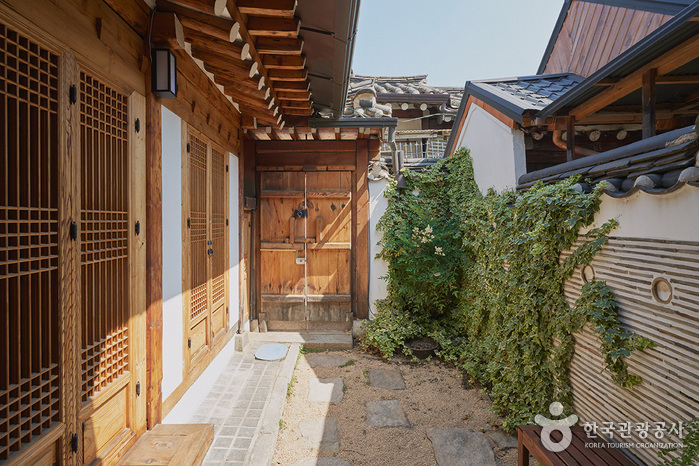
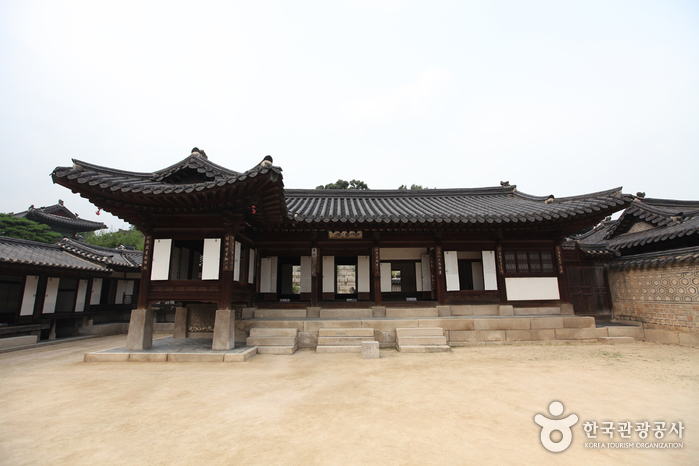
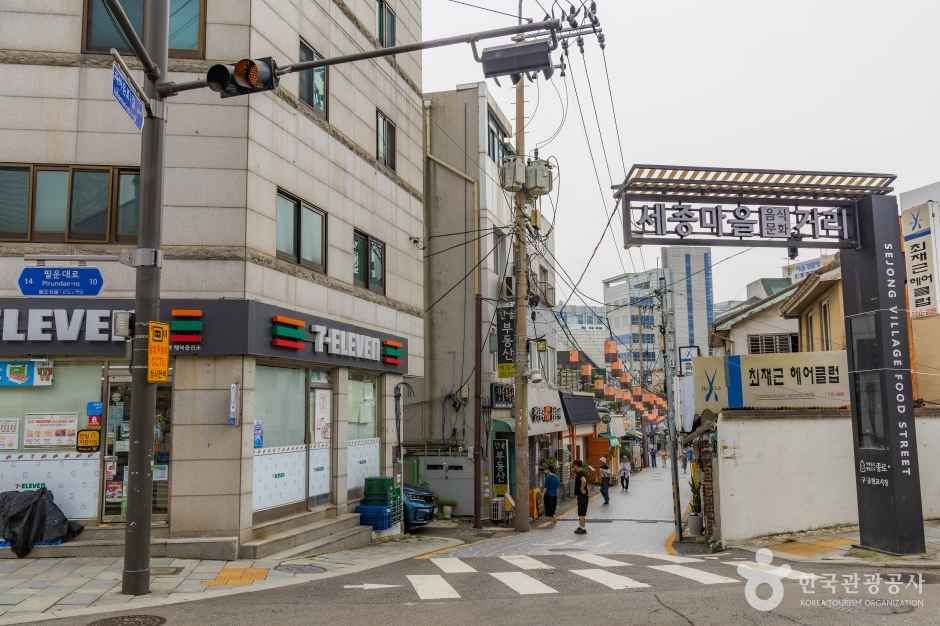
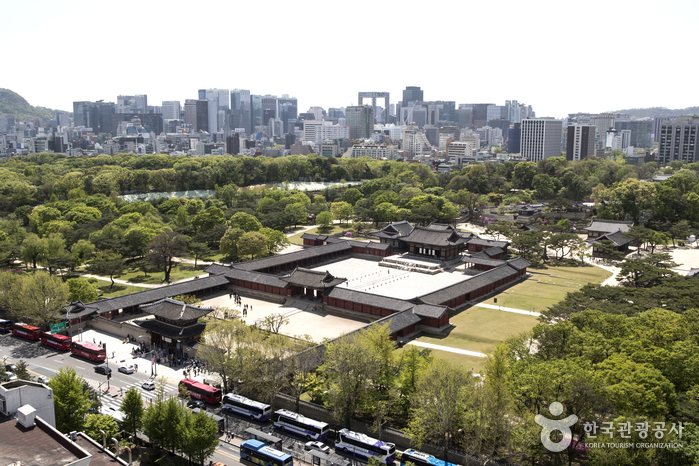
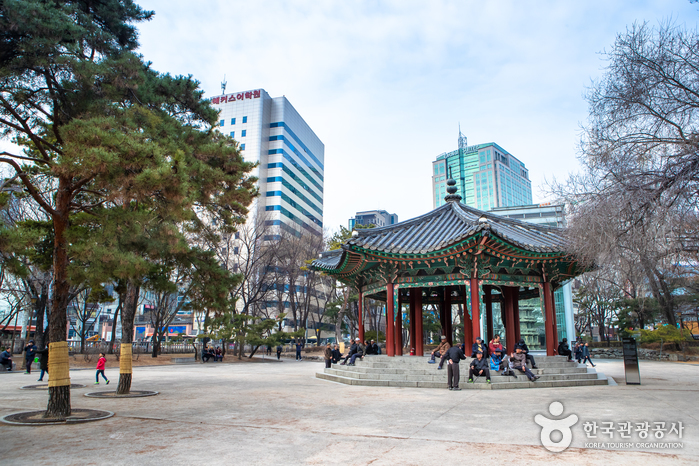
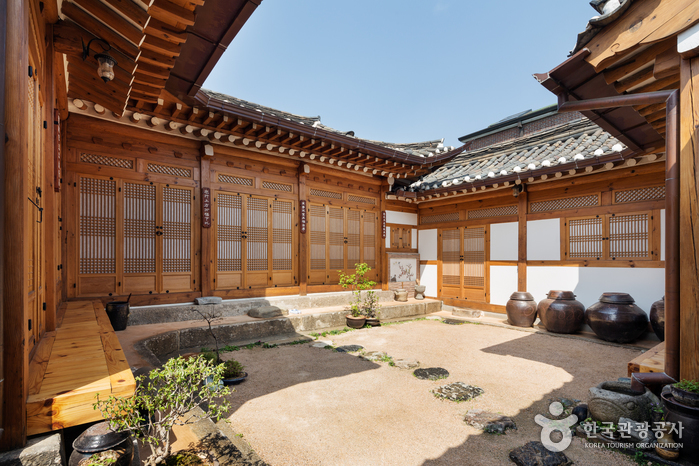
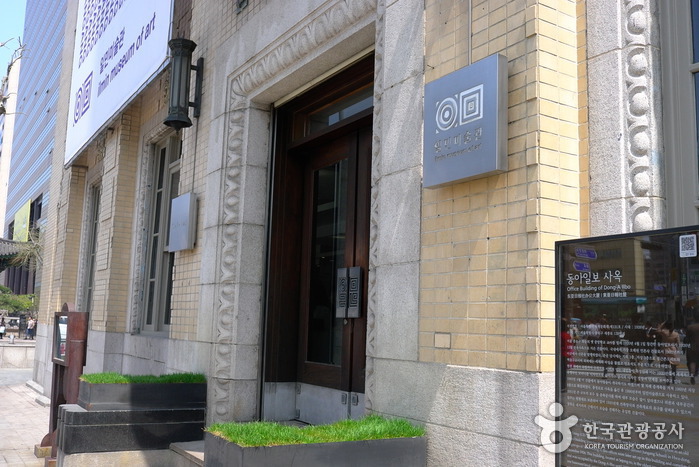
 Français
Français
 한국어
한국어 English
English 日本語
日本語 中文(简体)
中文(简体) Deutsch
Deutsch Español
Español Русский
Русский